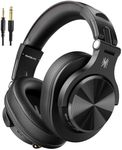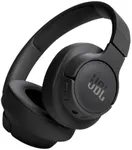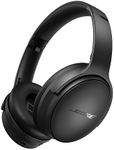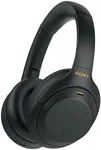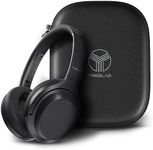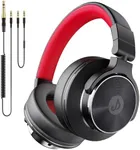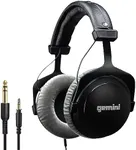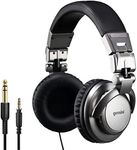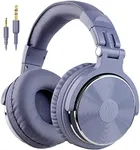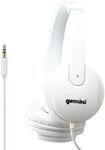Buying Guide for the Best Studio Headphones
Choosing the right studio headphones is crucial for anyone involved in music production, mixing, or any audio-related work. The right pair of headphones can make a significant difference in the quality of your work by providing accurate sound reproduction and comfort for long sessions. When selecting studio headphones, it's important to consider several key specifications to ensure they meet your needs and preferences.Frequency ResponseFrequency response refers to the range of frequencies that the headphones can reproduce, typically measured in Hertz (Hz). This spec is important because it determines how accurately the headphones can reproduce different sounds, from deep bass to high treble. A wider frequency response range (e.g., 20 Hz to 20,000 Hz) is generally better, as it covers the full spectrum of human hearing. If you work with a variety of audio content, look for headphones with a broad frequency response to ensure you can hear all the details in your recordings.
ImpedanceImpedance, measured in ohms (Ω), indicates the resistance the headphones provide to the electrical signal from the audio source. This spec is important because it affects the headphones' compatibility with different audio equipment. Low impedance headphones (below 50 ohms) are suitable for use with portable devices like smartphones and laptops, while high impedance headphones (above 100 ohms) are better suited for professional studio equipment with powerful amplifiers. Choose headphones with an impedance that matches your primary audio source to ensure optimal performance.
Driver SizeDriver size, measured in millimeters (mm), refers to the diameter of the speaker inside the headphones. This spec is important because larger drivers can produce more powerful and detailed sound, especially in the bass frequencies. Common driver sizes range from 30mm to 50mm. If you need headphones for critical listening and detailed audio work, consider models with larger drivers. However, keep in mind that driver size is just one factor in overall sound quality, and other design elements also play a role.
Closed-Back vs. Open-BackClosed-back headphones have ear cups that are sealed, preventing sound from leaking in or out. This spec is important for isolating sound, making them ideal for recording environments where you need to avoid bleed into microphones. Open-back headphones have ear cups that are open, allowing air and sound to pass through. They provide a more natural and spacious sound, which is beneficial for mixing and mastering. Choose closed-back headphones for recording and open-back headphones for mixing and mastering to get the best results in each scenario.
Comfort and Build QualityComfort and build quality are crucial for long studio sessions. This spec is important because uncomfortable headphones can cause fatigue and affect your performance. Look for headphones with adjustable headbands, cushioned ear pads, and lightweight designs. Build quality is also important for durability, especially if you plan to use the headphones frequently. Consider materials like metal and high-quality plastics for a longer-lasting product. Try on different models if possible to find the most comfortable fit for your head and ears.
Cable Type and LengthThe type and length of the cable can affect your workflow and convenience. This spec is important because a cable that is too short or too long can be cumbersome. Coiled cables are flexible and can extend when needed, while straight cables are less bulky but can be restrictive. Consider the length of the cable based on your studio setup and how much mobility you need. Detachable cables are also a good option as they can be replaced if damaged, extending the life of your headphones.
